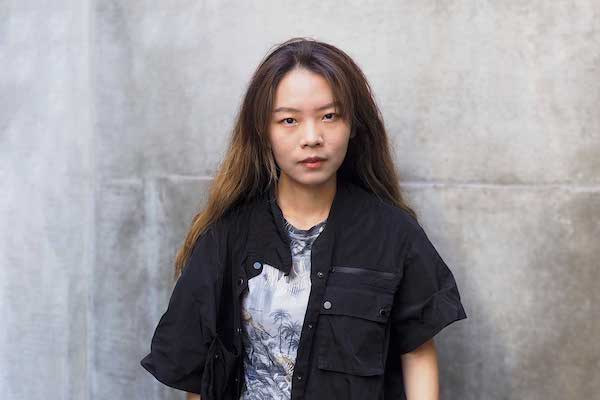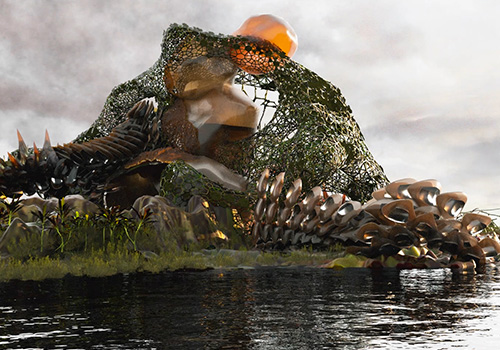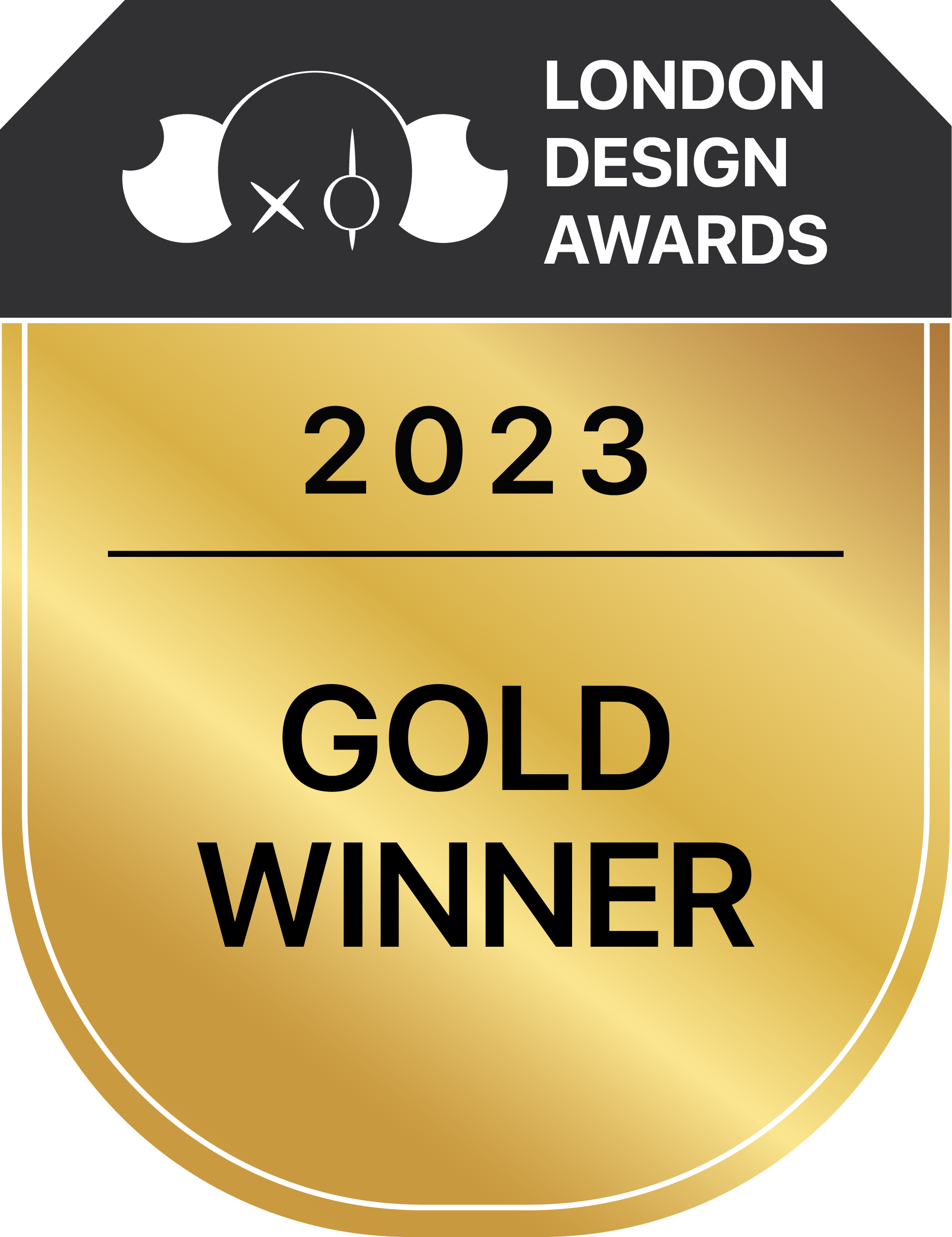
Yixuan Cai
1. Please give us a brief bio of yourself and your design background.
I am a Chinese-born architectural designer and multimedia artist based in Los Angeles, United States, specializing in digital environment visualization. Currently, I contribute my design expertise to Perkins&Will, a globally renowned architectural firm. Prior to this job, I have dedicated two years of my career to ISOZAKI+HuQian Partners, the Shanghai studio of the Pritzker Architecture Prize winner Arata Isozaki. Extending my enthusiasm in architectural visualization and animation, I have embarked on personal design projects that explore diverse digital media, addressing the dynamic interplay of movement and the passage of time in our daily surroundings. My creative endeavors have earned recognition, with shortlisted entries in competitions and featured exhibitions in cities such as London, Indianapolis, Chengdu, and upcoming showcases in Los Angeles and New Jersey.
I hold a Master of Architecture degree from the Southern California Institute of Architecture (SCI-Arc), and a Bachelor of Science degree from the University of Minnesota, Twin Cities.
2. What made you become/why did you choose to become a designer/artist?
Since a young age, I've been fueled by a passion to actively create and shape my surroundings. Engaging in hands-on projects, renovating and rearranging my personal space, and crafting intricate paper models have been sources of joy for me. The transformative power of a designer's ability to bring the most imaginative ideas to life has always captivated me.
As a somewhat introverted individual, I've discovered that I find greater freedom in expressing my values through design than through verbal communication. I want to dedicate my career to making our surroundings a better and more exciting place than when we first encountered them, and leaving a lasting impact for those who experience it.
3. Tell us more about your agency/company, job profile, and what you do.
Most of my personal work could be viewed at https://www.cai-yixuan.com. My work centers at the intersection of logical tectonic composition and fictional abstraction of natural surroundings. I draw inspiration from the intricate process of interweaving seemingly disparate elements into a harmonious and heterogeneous whole. Through my work, I've envisioned a future living environment that is not solely influenced by the rapid advancement of digital technology but is also shaped by an alternative manifestation of the natural world. This concept was illustrated in the work
4. What does “design” mean to you?
To me
5. What’s your favorite kind of design and why?
I'm particularly drawn to designs that establish meaningful connections between humans and nature, such as biophilic design, bionic design, solarpunk, and sustainable design. I always love experiencing and exploring nature. Having existed and thrived on this planet long before humans, it serves as an abundant source of inspiration and wisdom. In my perspective, embracing the gifts that nature provides allows for the creation of design schemes that are not only logical, organic but also inherently sustainable and resonate with our deeper roots.
6. To you, what makes a “good” design?
A good design should solve problems first, efficiently and sustainably. but then it is more important for it to evoke emotional reflection and to help people see what they didn
7. How did you come up with the idea for your award-winning design?
Looking at the contrast between the hyper-urban system of the Rosario city across the Parana Delta and the hyper-rural island that have various natural species preserved, I want to develop a project that could establish a conversation between the two distinct scenarios. I
8. What was your main source of inspiration for this design?
Local natural species are my main source of inspiration. For example the hexagonal infrastructure grid is the result of a series of form mutations of honeycombs; truss structures are abstractions and alignment of bird feathers; theater spaces draw their roots from the organic formation of stones. This is an experimentation of how nature and man-made artifacts could seamlessly blend in to evoke reflections on human impacts.
9. Do you think your country and its cultural heritage has an impact on your design process?
Definitely. I was born in Nanjing, China - a city where traditional wood palaces harmoniously coexist with modern skyscrapers. I spent a lot of time during childhood lingering at museums that are often built as restoration of relics from ancient architecture. The intricate spatial qualities with blend-in courtyards and exquisite structural details gradually ignited my passion for architecture and the surrounding environment. I couldn
10. Congratulations! As the winner of the London Design Awards, what does it mean to you and your company and team to receive this award distinction?
It
11. What were the main challenges you faced during the design process, and how did you overcome them?
Main challenge in this award-winning project as well as my other projects was always the balance between functionality and aesthetic pursuit. A lot of my projects focus on envisioning a fictional scenario. I often find myself having to substantiate their functionality and practicality. To overcome this challenge I run many tests to find the most efficient version under my aesthetic framework, but also at the same time return to basic architectural tectonic logic and search for innovative material solutions.
12. How do you think winning this award will impact your future as a designer?
I will be more confident in pursuing the fictional narrative of architecture and urban design. I will also continue my exploration in shaping more possibilities and applications of the relationship between natural organisms and human interaction. This award could be a starting point of my planning to evolve this concept into a series of design products that could create an environment and lifestyle that integrates nature heritage seamlessly and imaginatively.
13. What are your top three (3) favorite things about the design industry?
Job is different for each day. Get exposed to new and exciting things constantly.
Value for imagination and creativity.
Flexible schedule.
14. What sets your design apart from others in the same category?
Fictionality and storytelling. I always try to envision scenarios and context for my design and let them impact each other. I want to use design to unveil what hasn
15. Where do you see the evolution of design industry going over the next 5-10 years?
AI and sustainability are definitely two trends that are roaming now. I think within the next 5-10 years AI would help improve efficiency in early stages of design. I don
16. What advice do you have for aspiring designers who want to create award-winning designs?
Don
17. What resources would you recommend to someone who wants to improve their skills in the design industry?
Youtube has a lot of well-rounded tutorials on Rhino and Grasshopper that help me a lot when I
18. Tell us something you have never told anyone else.
I
19. Who has inspired you in your life and why?
Yoshiki, a Japanese musician who successfully combines classical and rock genres. I get inspired from his bold attitude, innovative spirit and diligent working ethic to break traditional limits. I aspire to channel similar approaches within the realms of design and architecture, where organic forms could intertwine with construction logics.
20. What is your key to success? Any parting words of wisdom?
Curiosity and passion.
21. Which THREE (3) friends/peers would you nominate to participate in the next London Design Awards?
Nero Chenxuan He
Yutao Fang
Sinew Zhang

